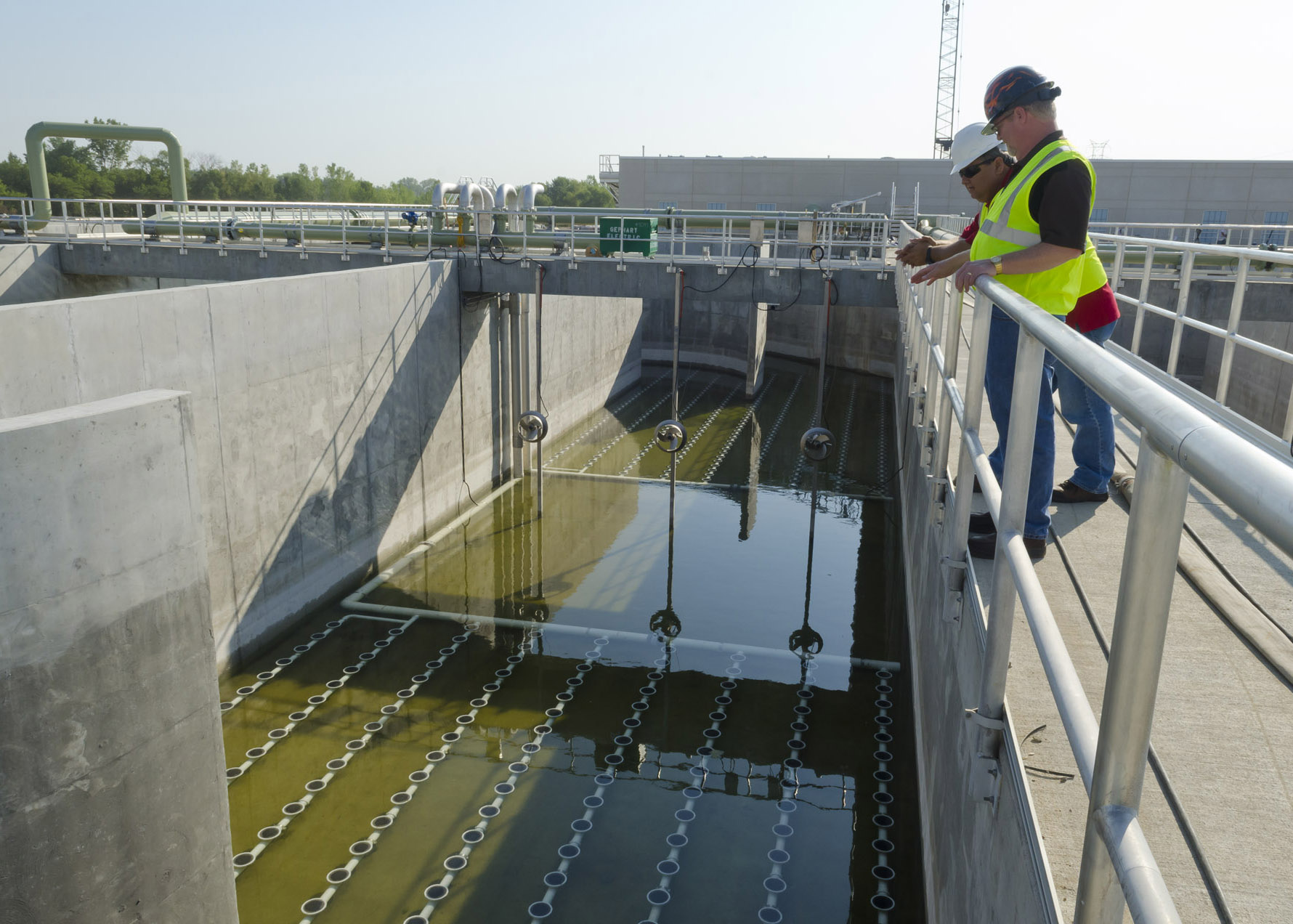industry water conservation practices
Point source pollution is characterized by relatively constant discharges from stationary locations or fixed facilities from which discrete discharges originate, such as municipal wastewater treatment plants and major industries.
The part of the strategy related to point sources are built on a technology assessment of practices that offer the most "bang for the buck" at reducing loading of nitrogen (N) and phosphorus (P) to Iowa surface waters from Iowa's major wastewater treatment plants and industrial facilities that discharge N and P to Iowa waters.
Helping municipalities and large industries improve water quality
One-hundred and forty eight of Iowa's largest cities and industrial facilities are being required to evaluate opportunities for reducing the amounts of nutrients they discharge and to implement changes that are determined to be technically and economically feasible.
The portions of this strategy related to point sources are built on a technology assessment of practices that offer the most "bang for the buck" at reducing loading of nitrogen (N) and phosphorus (P) to Iowa surface waters from Iowa's major wastewater treatment plants and industrial facilities that discharge N and P to Iowa waters. The assessment also takes into account related costs of these practices.
For the first time, discharge permits issued to these 130 facilities will require implementation of technically and economically feasible process changes for nutrient removal. These changes are designed to achieve targeted reductions of at least two-thirds in the amount of nitrogen and a three-fourths reduction in the amount of phosphorus from levels currently discharged by these facilities.
This approach has the potential to reduce the amount of nitrogen by at least 11,000 tons per year and the amount of phosphorus by 2,170 tons per year by municipal facilities alone. These figures represent a 4% reduction in nitrogen and a 16% reduction in phosphorus in the estimated statewide amounts of nitrogen and phosphorus discharged to Iowa waters from both point and nonpoint sources.
While it is true the largest percentage of nutrient loads in Iowa comes from nonpoint sources on an annual basis, this should not be interpreted to mean that point source contributions are insignificant. In fact, point sources can be the primary source of nutrient contributions during the most critical conditions for protecting stream aquatic life when stream flows are low and/or when a point source comprises the majority of flow to a stream. These types of low flow conditions commonly develop during summer months as well as during drought conditions. Both nonpoint source and point source loads play critical roles in Iowa and Gulf of Mexico waters.

